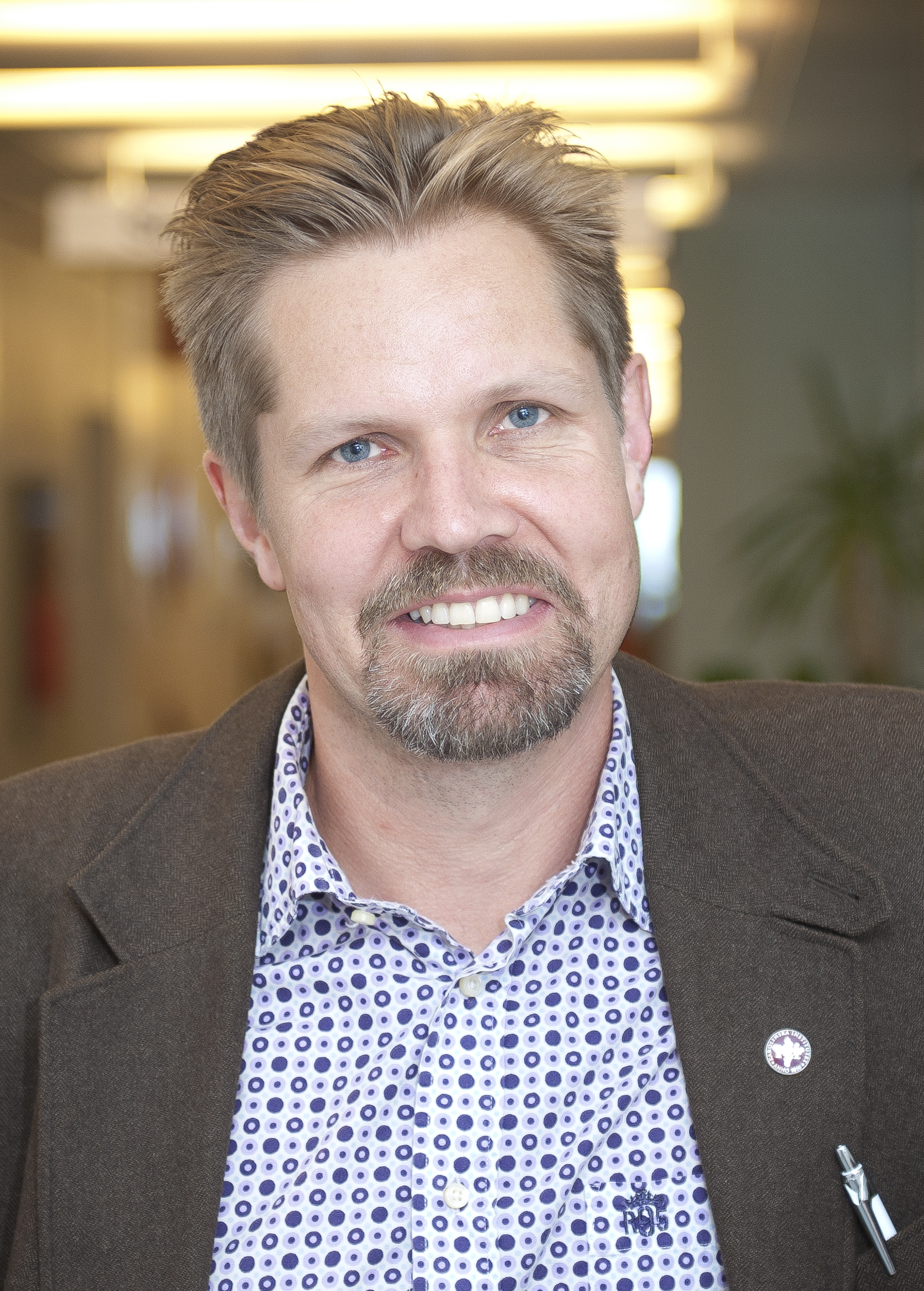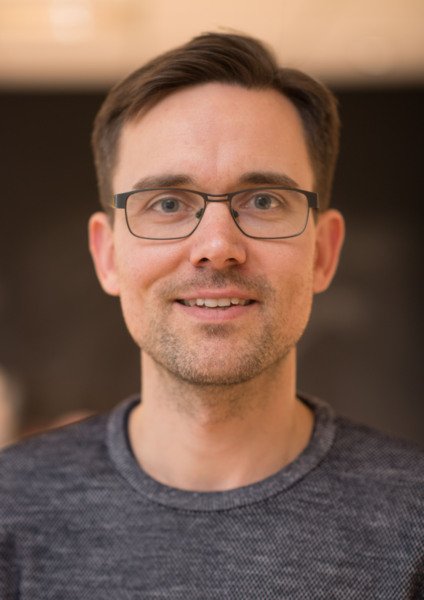Focus on early detection of autism
Researchers are slowly getting closer to achieving an understanding of the causes of autism. However, the research focusses just as much on the question of how to diagnose and care for today's autistic children as early as possible.

Text: Fredrik Hedlund. This is a revised version of an article first presented in Swedish in the magazine Medicinsk Vetenskap No. 3/2012. Revision made in spring 2019.
Autism is a condition that is a bit difficult to grasp. People with autism can range from high-functioning semi-geniuses/semi-savants, such as Dustin Hoffman's character Raymond Babbit in the film Rain Man, to severely developmentally disabled individuals who cannot cope without more or less continuous help.
As many as eight out of ten patients with autism have at least one supplemental diagnosis, such as developmental disabilities, epilepsy or ADHD. This makes things even more complicated. However, one thing all autistic people have in common is a limited ability to communicate and difficult with social interactions with their environment, as well as rituals and stereotypical behaviours.
Problems with social thinking cause autistic individuals to find it difficult to familiarise themselves with other people's thoughts and interact with them, understand social codes, know how to behave in social situations and understand what is expected of them. They often also find it difficult to see the ‘big picture’ and get hung up on details. Persons with autism often develop very specific areas of interest in which they can become very knowledgeable, while in some cases they cannot cope with the simplest everyday things.
No tests exist to determine whether a person has autism. It is only when the symptoms are so powerful that they bother others in proximity to the potentially autistic individual that a diagnosis may be made.

“It is deviant or dysfunctional behaviour that causes the person to have a disability and a diagnosis. One must exhibit symptoms that violate some type of social, cultural or other norm with one’s behaviour, says Sven Bölte, Professor of Child and Adolescent Psychiatric Science and Director of the Karolinska Institutet Centre of Neurodevelopmental Disorders, KIND.
This also entails a ‘sliding scale’, when it comes to who receives a diagnosis and who does not. One basis for this view is the fact that autism could be an extreme version of a normally distributed ability for social interaction. It is a fact that different people have different social talents; some can easily captivate an entire dinner party, while others appear very awkward in social contexts and find it difficult to know how to behave, and yet they receive no diagnosis on this basis.
Greater strengths in other areas
Organised Aspergians argue that they are really only part of a neurologically diversity that causes them to be weaker in the social field, but which may entail greater strengths in other areas. They may well have a point.
“There are studies that show that there is more autistic behaviour among scientists such as mathematicians, physicists, chemists and IT people,” says Sven Bölte.
“Those who see this as part of a neurological diversity posit that without autism, we might not have come so far in our scientific development, and perhaps this argument is not entirely wrong. One should not just emphasize the negative. Strengths exist, too,” he says.
And although autism is a healthcare diagnosis, it is not currently regarded as a disease.
“You're not talking about a disease, but rather about having a different neurological starting point. Many believe that they are autistic in their development, but do not necessarily believe that they need to be cured. Instead, they require training, special environments, different treatment and other forms of support,” says Sven Bölte.
In the past, autism spectrum disorders were divided into three primary diagnoses; autism, Asperger's syndrome, and autism-like conditions. However, since the publication of the American diagnostic manual Diagnostic and Statistics Manual of Mental Disorders, DSM-5, in 2013, only the term ‘autism’ has been used.
“There is no scientific basis for dividing the disease and having different names. No one has been able to find any qualitative differences, but only different levels of difficulty relating to similar problems,” says Sven Bölte.
Lack of social interaction
The reason many of us experience autistic persons’ lack of social interaction and social thinking abilities as almost provocatively deviant is that we are often totally unaware of how social we ourselves really are.
Sven Bölte shows a small film in which two triangles and one ring move around and into a rectangle. The larger triangle is aggressive towards the smaller triangle, which then befriends the circle. They then rescue themselves from the angry triangle, which becomes furious and destroys its house – the rectangle.
“Although all we see is a few triangles and a circle moving around on the screen, we immediately see a complex interaction and social relationships,” he explains.
“We have an incredibly strong driving force to always see a social meaning in everything. Autistic persons lack that momentum, and we can't quite understand that. We do not really want to accept that there are people who do not have this driving force, and who walk around without understanding any of it,” he continues.
In the past, people with autism sometimes did not receive a diagnosis until they became adults. Even today, children with milder symptoms and high-functioning autism are often diagnosed quite late, when they are eight to ten years of age or older. Children with more difficult problems are often diagnosed earlier, but even in these cases, they tend to be three or four years old. Researchers at Karolinska Institutet are now searching for ways to diagnose children even earlier.

Terje Falck-Ytter is a researcher at KIND and project manager for the Younger Siblings Project (Projekt Småsyskon). There he studies the younger siblings of children with autism in an effort to detect very early signs of autism. There is a clear genetic component to autism, and siblings of autistic children are more likely to be autistic themselves.
“The incidence of autism in younger siblings is between 10 per cent and 20 per cent, compared to the general incidence, which is usually set at around one per cent,” says Terje Falck-Ytter.
The younger siblings are therefore an important group to study. In the project, they are examined every four months from the age of six months, at which time they undergo a battery of brief tests.
“We are examining many different areas, in order to establish a rich range of characteristics of development in the early years of life,” says Terje Falck-Ytter.
With new methods that can identify affected children at a young age, treatment may be initiated early and can hopefully contribute to the children’s positive development and prevent the negative consequences of autism.
“I believe that the closer one can get to the time when the problem begins, the greater the chance of success. Then perhaps one can change this path before it becomes too engrained,” says Terje Falck-Ytter.
Teaching children basic skills
There is no drug treatment for autism. Instead, treatment focuses on teaching children basic skills related to communication, play skills and learning to mimic. Frequently, concrete practical skills such as how to sit down, how to eat and how to go to the toilet are also part of the approach.
“We are built so that we find it very easy to learn in the social environment in which we find ourselves; we adapt very well. But It seems that the nervous system in children with autism does not really fit with their environment, so they don’t learn well in their everyday environment. Rather, they need numerous other opportunities for learning,” says Ulrika Långh, a psychologist and psychotherapist, Programme and Development Director at the Autism Centre for Small Children in Stockholm and a researcher at KIND at Karolinska Institutet.
She and her co-workers teach parents with autistic children and preschool personnel how to make the best use of everyday situations so that the children can learn to function better in social interactions.
“Many toddlers learn these things immediately, whereas our children may need to practice certain things hundreds of times,” she says.
The cause or causes behind autism are still a conundrum; no one knows what causes the disorder.
“Twin studies have shown a heredity of around 90 per cent. But some say that this percentage may have been overestimated and that there is a greater scope for environmental factors,” says Sven Bölte.
“It is now believed that there is a strong genetic disposition, but that a triggering environmental factor may also be necessary – such as a virus contracted during pregnancy, an event during childbirth, or perhaps stress during pregnancy, addiction or a ‘cocktail’ of all of the above,” he says.
A complex pattern of genes
To try to discover how it’s all connected, in 2010 a study was launched at Karolinska Institutet. The study was called the SAGA study and was led by Professor Emerita Christina Hultman. The study has now been renamed PAGES, which stands for ‘Population-Based Autism Genetics and Environmental Study’. The starting point for the study has always been the theory that it is a complex pattern of genes and environmental factors that together lead to autism. It is this pattern that researchers are endeavouring to map.
People from all over Sweden who has been diagnosed with autism at some point in their lives are identified via the National Patient Register and contacted. Those who wish to participate in the study can submit a blood sample.

“We have now completed the first portion of the collection, and about 1,500 people with autism, and in many cases their parents and even grandparents, have provided blood samples. This makes it possible to see which genetic changes can be traced to the parents and which have arisen spontaneously. We also have a wealth of control material with which to compare these samples. What makes our study unique from an international perspective is that our sample group covers the entire country, and is not just sourced from a few health clinics,” says Sven Sandin, a statistician and researcher in psychiatric epidemiology at Karolinska Institutet who is currently responsible for the study.
To date, the study outcomes have resulted in some dozen publications in scientific journals.
“Above all, the PAGES study has led to a number of publications on genetic changes in cases of autism. Both unusual mutations and many minor genetic changes are important in autism. Some genetic changes are inherited from the parents, but other changes are not shared with the parents and seem to arise spontaneously,” he says.
Indeed, the parents are of great interest to autism research, because so much of it has to do with genetics. Together with colleagues at Karolinska Institutet and in collaboration with international research groups, Sven Sandin has been able to demonstrate that advanced maternal and/or paternal age is an independent risk factor.
“We have several studies that show that older parents increase the risk of autism. The risk that one’s child will develop autism increases two to three fold if the father is over 50, compared to if the father is around 25 years of age. The mother's age is also relevant; both very young as well as older mothers seem to be of some significance, and if there is a big age difference between the parents this also appears to be a factor,” he says.
Identify individual genes
But research has now also been able to identify individual genes linked to autism. This means that the complex pattern of the disorder is slowly starting to emerge.
“In an analysis published in Nature in February 2019 that included genetic data from the Swedish PAGES study, for the first time we have been able to link twelve individual genes to the risk of autism,” says Sven Sandin.
Several of the genes control how the brain develops with regard to relationships and connections between neurons in different areas of the brain. The overarching theory is therefore that relationships between areas that are far apart in the brain do not develop as they should, while the short connections between nerve cells in certain areas of the brain are far too numerous.
“This fits quite well with other existing research. It is believed that too many connections in local parts of the brain cause one to get hung up on details, and result in very strong sensory experiences. The long connections, on the other hand, are used to create wholes, have higher cognition, and tie things together,” says Sven Bölte.
